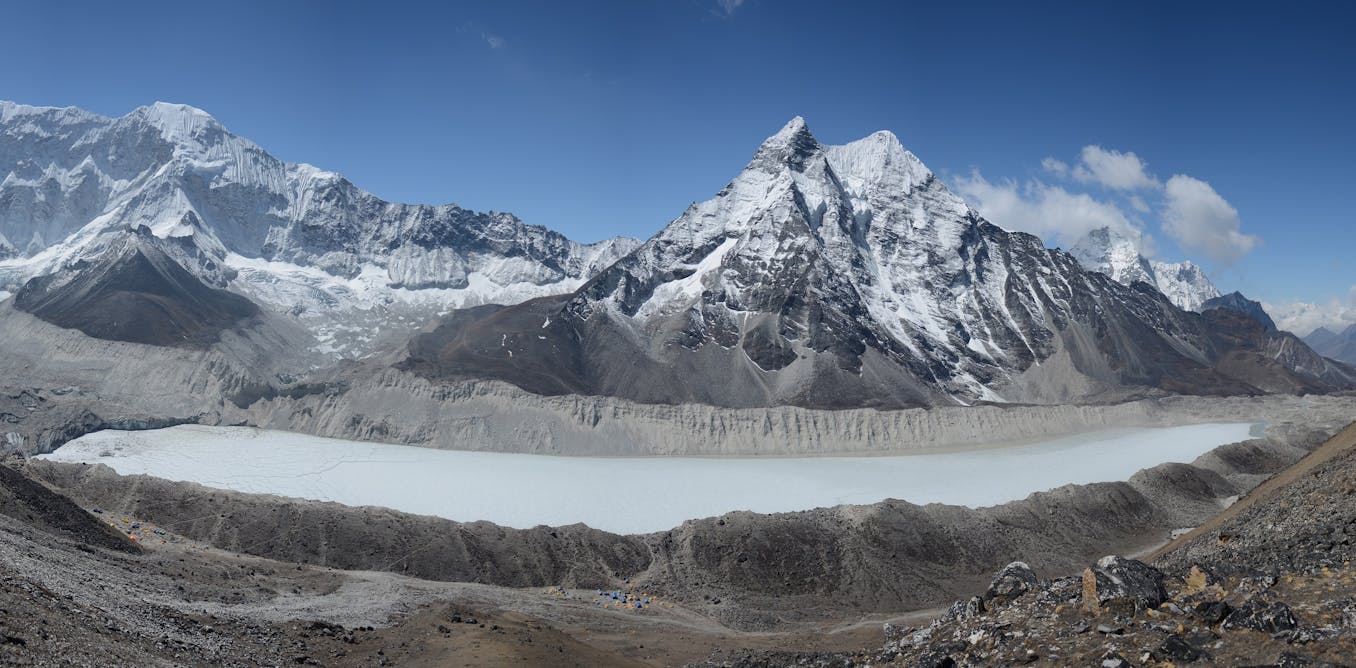Melting Glaciers: A Looming Threat of Catastrophic Flash Floods
As the world grapples with climate change, one of the most alarming consequences is the accelerated melting of mountain glaciers. These majestic structures, which have stood for millennia, are now retreating at an unprecedented rate, threatening millions with the specter of catastrophic flash floods. The implications of this phenomenon are profound, affecting not just the environment, but also the livelihoods and safety of communities across the globe.
The Science Behind Glacier Melting
Glaciers are formed over centuries, as layers of snow compress into ice. They act as natural reservoirs, slowly releasing water into rivers and streams. However, rising global temperatures, primarily driven by human activities, have caused these glaciers to melt at alarming rates. According to the Intergovernmental Panel on Climate Change (IPCC), glaciers worldwide are losing mass at a rate of about 335 billion tons per year. This rapid melting is not just a slow drip; it can lead to sudden releases of water, creating dangerous flash floods.
Understanding Flash Floods
Flash floods occur with little warning, often within six hours of heavy rainfall or rapid snowmelt. The melting glaciers contribute to these floods by releasing large volumes of water in a short period. This can overwhelm local waterways, leading to devastating consequences. The key factors that contribute to flash floods include:
- Topography: Steep terrains can exacerbate the speed and force of floodwaters.
- Soil Saturation: Heavy rainfall or rapid melting can saturate the ground, reducing its ability to absorb water.
- Ice-Dammed Lakes: Sometimes, meltwater accumulates behind natural dams of ice, which can suddenly break, unleashing torrents downstream.
Regions at Risk
While glacier melt affects many areas, certain regions are particularly vulnerable to flash floods:
- The Himalayas: Home to some of the largest glaciers outside the polar regions, this area is experiencing significant melting, threatening communities in countries like Nepal and India.
- The Andes: South America’s mountain range is witnessing rapid glacier loss, affecting water supplies and increasing the risk of floods in Peru and Bolivia.
- The Alps: European glaciers are shrinking, posing risks to tourism and local populations in countries like Switzerland and Austria.
In these regions, communities often rely on glacial meltwater for drinking, agriculture, and hydropower. As glaciers retreat, the immediate threat of flash floods looms larger, underscoring the need for preparedness and adaptation.
Historical Context of Flash Floods Related to Glacier Melting
Historically, there have been numerous instances where glacier melt has triggered catastrophic floods. One of the most notable events occurred in 2010 in Ladakh, India, where sudden glacial melt led to flash floods that claimed lives and destroyed infrastructure. Similarly, in 2015, the town of Chamonix in France experienced severe flooding after a glacier burst.
These events serve as stark reminders that the threats posed by melting glaciers are not merely theoretical; they are real, immediate challenges that communities must face. Learning from past incidents can help in developing better strategies for risk management and disaster preparedness.
The Role of Technology in Monitoring Glacial Changes
Advancements in technology have significantly improved our understanding of glacier dynamics. Satellite imagery and remote sensing allow scientists to monitor glacier health and predict potential flood events more accurately. Tools such as:
- Satellite Altimetry: Measures changes in glacier elevation and mass.
- Ground-based Sensors: Monitor surface melt and temperature variations.
- Hydrological Models: Simulate water flow and assess flood risks.
These technologies not only enhance our understanding but also aid in formulating early warning systems that can help at-risk communities prepare for potential flash floods.
Community Preparedness and Resilience
As the risks of flash floods escalate, it’s crucial for communities, especially in vulnerable regions, to develop effective preparedness plans. Here are some strategies that can enhance resilience:
- Education and Awareness: Educating communities about the risks of flash floods and the signs of impending danger can save lives.
- Infrastructure Improvements: Investing in flood barriers, drainage systems, and early warning systems can mitigate the impact of sudden floods.
- Emergency Response Plans: Local governments should have clear plans in place for evacuations and resource distribution during emergencies.
Moreover, involving local communities in these initiatives fosters a sense of ownership and responsibility, ultimately enhancing resilience against flood risks.
Global Policy and Climate Action
Addressing the root causes of glacier melting requires collective global action against climate change. International agreements, like the Paris Agreement, emphasize the need for countries to commit to reducing greenhouse gas emissions. Policymakers must prioritize sustainable practices and invest in renewable energy sources to mitigate climate change impacts.
In addition, funding for research and development of climate adaptation strategies is essential. Supporting vulnerable communities in transitioning to resilient practices can significantly reduce risks associated with melting glaciers and flash floods.
Conclusion: A Call to Action
Melting glaciers represent more than just a climate phenomenon; they are a looming threat of catastrophic flash floods that can devastate communities, ecosystems, and economies. The urgency of this situation cannot be overstated. As individuals, communities, and nations, we must act now to raise awareness, bolster preparedness, and address climate change head-on.
By embracing sustainable practices, investing in technology, and fostering community resilience, we can confront the challenges posed by melting glaciers and work towards a safer, more sustainable future. The time to act is now—let us ensure that we do not become the generation that watched as the glaciers melted away, only to be swallowed by the floods that followed.
See more Your Daily Weather



